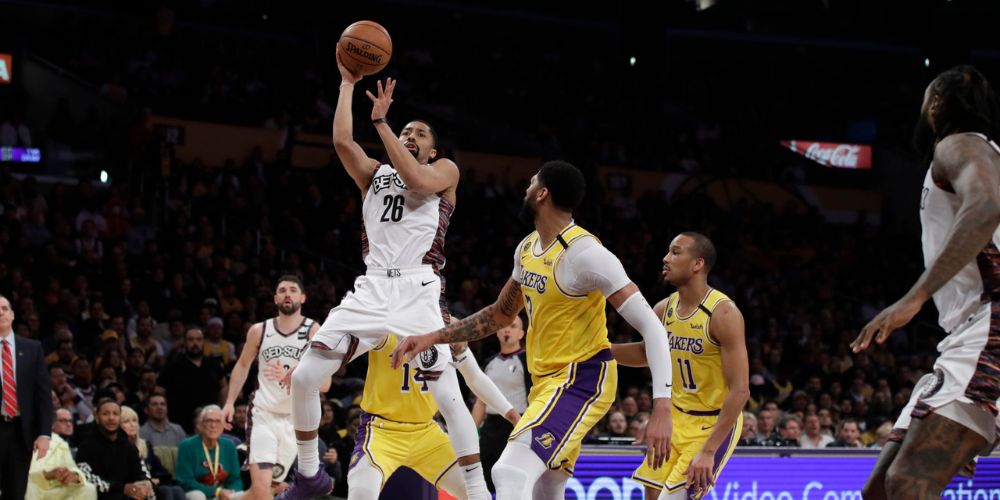Contents
- 1 Introduction
- 2 The Genesis of the NBA In Season Tournament
- 3 Structure of the Tournament
- 4 Teams and Players
- 5 Rules and Regulations
- 6 Impact on Regular Season
- 7 Fan Engagement
- 8 Broadcasting and Media Coverage
- 9 Economic Implications
- 10 Comparisons with Other Sports Leagues
- 11 Criticism and Controversies
- 12 Success Stories and Highlights
- 13 Future Prospects
- 14 Conclusion
- 15 FAQs
Introduction
What if I told you that the NBA has found a way to make the regular season even more thrilling? Enter the NBA In Season Tournament. This innovative addition aims to add more excitement, engagement, and competitive spirit to the basketball season. But what exactly is this tournament, and why should you care?
The Genesis of the NBA In Season Tournament
Historical Context
The idea of an in-season tournament has been introduced previously. It’s inspired by similar formats in European soccer leagues, where cup competitions run parallel to regular-season matches. The NBA saw an opportunity to inject some mid-season excitement and decided to try it.
Motivation Behind the Concept
The primary motivation was to combat the mid-season lull and provide additional meaningful games. It’s also a chance to showcase the league’s talent in a high-stakes environment, potentially drawing in more viewers and sponsors.
Structure of the Tournament
Overview of the Tournament Format
The NBA In Season Tournament is designed to fit seamlessly into the regular season. It starts with a group stage where teams are divided into pools based on their performance in the previous season.
Group Stages and Knockout Rounds
Teams compete in a round-robin format within their groups—the top teams from each group advance to the knockout rounds, which culminate in a championship game.
Seeding and Match Scheduling
Seeding is based on the previous season’s standings, ensuring balanced competition. Matches are scheduled to minimize disruption to the regular season, with the knockout rounds held on specific dates to maximize viewership.
Teams and Players
Participating Teams
All 30 NBA teams will participate and be split into groups. This inclusive approach ensures that every team has a chance to compete for the mid-season glory.
Key Players to Watch
Star players like LeBron James, Kevin Durant, and Giannis Antetokounmpo often step up in high-stakes games. However, keep an eye out for breakout performances from emerging talents, too.
Rules and Regulations
Specific Rules for the Tournament
The tournament follows most NBA rules but includes unique elements like potential tie-breakers and point differentials to determine standings in the group stage.
Differences from Regular Season Games
One key difference is the heightened intensity. Games in the tournament often feel like playoff matches, with teams putting in extra effort to win the prestigious mid-season trophy.
Impact on Regular Season
How It Affects the Regular Season Standings
Wins and losses in the tournament count towards regular season standings, adding an extra layer of importance to these games. It can shake up playoff seedings and add unpredictability to the season.
Player Rest and Management
Coaches need to balance the desire to win the tournament with the need to rest star players. This adds a strategic element to player management and rotation.
Fan Engagement
Enhancing Fan Experience
The tournament is designed to captivate fans with its fast-paced, knockout-style format. It breaks the monotony of the regular season and offers fans something new and exciting to look forward to.
Marketing and Promotions
The NBA heavily markets the tournament, using it as a vehicle to drive fan engagement through social media campaigns, exclusive merchandise, and interactive fan experiences.
Broadcasting and Media Coverage
TV Rights and Streaming Options
The tournament games are broadcast on major sports networks and streaming platforms, ensuring that fans can catch the action live, wherever they are.
Media Hype and Coverage
Media coverage is extensive, with analysts and commentators breaking down the games, providing in-depth analysis, and exciting vital matchups.
Economic Implications
Financial Benefits for Teams
Winning the tournament comes with financial rewards, providing teams with an extra incentive. It also boosts ticket sales and merchandise revenue.
Revenue Generation for the NBA
The tournament attracts additional sponsorship deals and advertising revenue, significantly contributing to the NBA’s financial health.
Comparisons with Other Sports Leagues
Similar Tournaments in Other Sports
European soccer leagues have successfully implemented in-season tournaments for decades. The NBA’s version draws inspiration from these models and adapts them to fit the basketball calendar.
Lessons Learned and Best Practices
Learning from other sports, the NBA focuses on maintaining competitive balance, ensuring high-stakes games, and maximizing fan engagement.
Criticism and Controversies
Common Criticisms
Some critics argue that the tournament disrupts the regular season or that it’s an unnecessary addition. Concerns about player fatigue and injury risks are also prevalent.
Addressing the Controversies
The NBA addresses these concerns by carefully scheduling games and ensuring that the tournament does not overly burden players or teams.
Success Stories and Highlights
Memorable Moments from Past Tournaments
Although relatively new, the tournament has already produced some unforgettable moments, from buzzer-beaters to stunning upsets.
Success Stories of Teams and Players
Teams and players who perform well in the tournament often carry that momentum into the rest of the season, showcasing their resilience and talent.
Future Prospects
Potential Changes and Improvements
The NBA continuously evaluates the tournament, considering changes like expanding the format or adjusting the schedule to enhance its appeal and effectiveness.
Long-term Impact on the NBA
The in-season tournament has the potential to become a staple of the NBA calendar, adding a new layer of excitement and competition to the league.
Conclusion
The NBA In Season Tournament is a bold and innovative addition to the basketball season. It offers fans more excitement, teams more competition, and the league more opportunities for growth. As it continues to evolve, its impact on the NBA will undoubtedly grow, making it an essential part of the basketball landscape.
FAQs
Q: What is the NBA In Season Tournament’s format?
A: The tournament starts with a group stage, followed by knockout rounds leading to a championship game. Teams are divided into groups based on their previous season’s performance.
Q: How does the tournament affect player performance?
A: The high-stakes nature of the tournament often brings out the best in players, leading to intense and competitive games.
Q: Are there any financial incentives for teams?
A: Yes, winning teams receive financial rewards, and the tournament generates additional revenue through sponsorships and advertising.
Q: How can fans watch the games?
A: Games are broadcast on major sports networks and streaming platforms, making them easily accessible to fans.
Q: What changes can we expect in future tournaments?
A: The NBA is continually evaluating the tournament, with potential changes including format adjustments and scheduling tweaks to enhance its appeal.
Latest Post!
- Art Thunderonthegulf Craft: A Coastal Celebration of Creativity
- The Future of Healthcare: Embracing At-Home Blood Testing
- Sports Harmonicode: The Key to Peak Athletic and Esports Performance
- Choosing the Right Enterprise Application Platform: Key Features and Considerations
- Mistakes to Avoid With Debt Collectors
- Signs Your Commercial HVAC System Needs Repair

Sarah Wilson, an accomplished writer and seasoned blogger, weaves compelling narratives that transport readers to new and uncharted worlds. With a talent for vivid storytelling and thoughtful insight, her work leaves a lasting mark, enchanting both the imagination and intellect.






